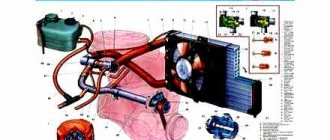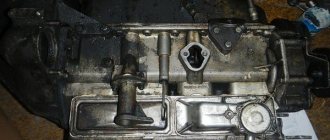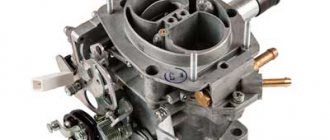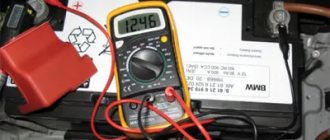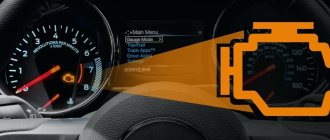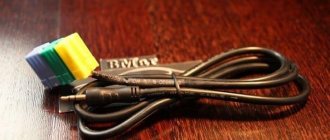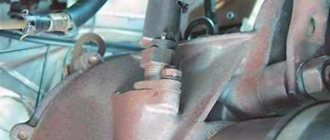HOMEMADE BOOSTER FOR CAR BATTERY
The day before, I had been listening to music all evening in my Mitsubishi Outlander XL, pumping a 700-watt subwoofer using just the battery, for which I had to pay in the morning - the car did not want to start. When trying to start, it sneezed and clicked, hinting at a lack of battery charge. But I urgently needed to go with my son on business.
This situation sometimes arises if you drive a little - the battery does not have time to be recharged by the generator and drops below the minimum level allowed for the starter factory (about 11.7 V).
There are three options here:
- Connect the battery to start from another car (not everyone wants to take risks or waste their time on this).
- Remove the battery and take it to mains charging (difficult and time-consuming, the settings in the BC and radio may go wrong).
- Use a small booster booster.
A booster is a small device that is connected to a dead battery and helps it start the car, adding the necessary watts of power. Typically, a booster contains several standard lithium cans with good current (flat or 18650 size - it doesn’t matter) plus all sorts of indicator electronics.
The price of such a useful thing starts from 2000 rubles, which you don’t really want to throw away on such a simple device. Maybe someday it will be bought (assembled), but we need to go now! In general, the idea that came to mind was this: let a toy radio-controlled jeep help launch a big jeep!
It will help with its two 7.4 V batteries (8 V when fully charged), connected in series with each other and in parallel with the car's lead battery.
Of course, their power will not be enough for a reliable start, it is advisable to connect another such chain of 4 Li-Ions in parallel with the first, but since voltage measurements showed that some tenths of a volt are missing, there is a chance to pull this off.
I quickly connected the connectors with a wire and connected them to cables with powerful crocodiles.
The metal of these crocodiles is soldered very poorly - we had to use soldering acid.
In general, in about 20 minutes the simplest homemade booster was ready - let’s move on to testing.
With the electronics turned off, the car's battery showed 11.4 volts, and when the devices were turned on, the voltage dropped to 11.1.
We add lithium lead and try to press the engine start button.
Surprisingly it worked! The engine was indignant for about 5 seconds, after which it started. At the same time, the booster wires got very hot - after all, a 200 A current pulse. Naturally, if the battery is deeply seated, this trick will not work, at least not with 4 lithium banks, but if the battery is not too critical, you can assemble such a homemade booster very quickly, since almost everyone has Li-Ion 18650 batteries.
Do-it-yourself booster for starting a car
As winter approaches, a common problem for drivers is that the battery may not always start the car, it is either seized, and the battery itself does not work very well in cold weather.
A good solution would also be to create a booster with your own hands .
In simple terms, this is the same external battery (power bank) as for a phone, only this time for our car.
In general, the idea that came to mind was this: let a toy radio-controlled jeep help launch our car!
It will help with its two 7.4 V batteries (8 V when fully charged), connected in series with each other and in parallel with the car's lead battery.
Of course, their power will not be enough for a reliable start, it is advisable to connect another such chain of 4 Li-Ions in parallel with the first, but since voltage measurements showed that some tenths of a volt are missing, there is a chance to pull this off.
I quickly connected the connectors with a wire and connected them to cables with powerful crocodiles.
The metal of these crocodiles is soldered very poorly - we had to use soldering acid.
In general, in about 20 minutes the simplest homemade booster was ready - let’s move on to testing.
With the electronics turned off, the car's battery showed 11.4 volts, and when the devices were turned on, the voltage dropped to 11.1.
We add lithium lead and try to press the engine start button...
Surprisingly it worked! The engine was indignant for about 5 seconds, after which it started. At the same time, the booster wires got very hot - after all, a 200 A current pulse. Naturally, if the battery is deeply seated, this trick will not work, at least not with 4 lithium banks, but if the battery is not too critical, you can assemble such a homemade booster very quickly, since almost everyone has Li-Ion 18650 batteries.
Advice for the future
In order to always know and control the charge level of your car battery in the future, to eliminate the situations described above, buy yourself (about 300 rubles) such a voltmeter for the cigarette lighter:
Device link
It can show battery voltage, interior temperature and current consumed via USB. The indication is displayed on the LED display alternately at intervals of 10 seconds.
Yes, yes, they also have a couple of standard USB connectors, which will not be superfluous in the car interior. So this device is a must have for motorists!
Also, if you might be interested in how to assemble a Charger for your battery
- Comments
Social Comments
Advice for the future
In order to always know and control the charge level of your car battery in the future, to eliminate the situations described above, buy yourself (about 300 rubles) such a voltmeter for the cigarette lighter:
It can show battery voltage, interior temperature and current consumed via USB. The indication is displayed on the LED display alternately at intervals of 10 seconds.
Yes, yes, they also have a couple of standard USB connectors, which will not be superfluous in the car interior. So this device is a must have for motorists!
Do-it-yourself portable starting device for a passenger car
One of the features of the battery is that it does not fail instantly: the battery fades gradually, and it can still be used for some time. But in winter, a headache begins: the battery refuses to produce the required current, and starting the engine becomes impossible. In such a situation, it is enough to start the car, and then its generator will recharge the battery, and it will become operational again. The starter charger (ROM) helps out. Its purpose is precisely to supply the required current when powered from a regular 220 V network. However, such things are expensive. How to make a starting device for a car with your own hands will be discussed below.
Do-it-yourself starting device for a car
To insure against unnecessary hassle associated with starting a car engine in the cold season, I made a starting device with my own hands. The calculation of its parameters was carried out according to the method specified in the list of references [1].
The operating current of the battery in starter mode is: I = 3 x C (A), where C is the nominal battery capacity in Ah. As is known, the operating voltage on each battery (“can”) must be at least 1.75 V, that is, for a battery consisting of six “cans,” the minimum operating voltage of the battery Up will be 10.5 V. Power supplied to starter: P st = Uр x I р (W)
For example, if a passenger car has a 6 ST-60 battery (C = 60A (4), Rst will be 1890 W. According to this calculation, according to the scheme given in [2], a PU of appropriate power was manufactured. However, its operation has shown that that it was possible to call the device a starting device only with a certain degree of convention.The device was capable of operating only in the “cigarette lighter” mode, that is, in conjunction with the car’s battery.
Calculation of starting device parameters
Before starting assembly, it is necessary to calculate the technical characteristics to ensure the normal functioning of the ROM. For a successful start, the motor requires a current of 100 amperes and a voltage of at least 14 volts. The result is an output of 1.4 kW. But even such a product does not guarantee a successful start of the power unit. Initially, the starter needs a current of 200 amperes (maybe more, it all depends on the make of the car). A certain share of the power goes to the battery, which can cope with it, even if it is in a discharged state.
Selection options
The starting device is selected based on the voltage of the battery used in the car. Passenger cars usually use 12-volt batteries, while tractors usually use 24-volt batteries. If you are in doubt about the type of battery you have, then you need to pay attention to the labeling of the device - it should indicate the numbers 12 or 24. To ensure normal starting of the power unit, you can purchase a regular household battery, but if you drive a tractor, then for such an internal combustion engine you need to buy a device with a high current.
However, the main parameter you need to pay attention to is the starting current. The current may be different, it all depends on the specific battery, so in any case you will need to study the markings. It should also be taken into account that the starting current may vary, especially if the battery is discharged and it is cold outside.
If you have decided on the starting current, then pay attention to the volume of the launcher. The choice of volume depends on the conditions under which the PU will be used. For example, for a passenger vehicle, the best option would be to choose a more compact device, the battery reserve of which will be low. As for the same tractors or SUVs, in this case it is better to give preference to PU with a large margin. Moreover, the higher this indicator is, the better (the author of the video is the Made in a Garage channel).
Do-it-yourself starting device based on a transformer
A homemade starting device for a car necessarily includes a transformer - a fundamental part of the circuit. The cross-section of its core is from 36 square meters. cm. For winding I, copper wire with a cross-section of 2 mm is used. When winding yourself, use wire with varnish insulation. The turns (from 260 to 290) must be arranged in three layers, between which insulating material (for example, paper) is laid. After the primary winding is ready, check the idle speed: the required current is 200–380 mA (the transformer should not heat up). The best option is to use a factory transformer. But in this case, the secondary winding will still have to be removed. You need to wind it yourself (cross-section - 10 sq. mm, if a wire with several cores is used - 6 sq. mm), voltage - 13.8–13.9 V. To measure it, use a load resistor of 5–10 Ohms. To achieve this, the “poke” method is suitable:
- Wind 10 turns, connect the transformer to the network and measure the voltage. Divide the resulting number by 10 and eventually you will understand how many volts are contained in one turn.
- Wind the necessary turns so that the voltage corresponds to 13.8–13.9V.
The essence of the operation of a starter charger of the described type is simple: the transformer lowers the voltage, which the diodes rectify, converting alternating current into direct current. Next, its pulsations are smoothed out by a filter capacitor. In some more complex circuits, thyristors and transistors are additionally used. These elements, connected after the diode bridge, finally rectify the current. Below is a diagram of a do-it-yourself starting device for a car:
The diodes used here must pass a large reverse current (from 250 A) and a voltage of at least 50 V. As an option, you can use the electronic component D161-250 with an index at the end of the designation from 3 to 18.
Transformer ROM has only one drawback - the large mass of the device. However, this minus is fully compensated by many advantages:
- high reliability and power;
- possibility of use on a car whose battery is completely dead;
- simplicity of design, allowing you to assemble it yourself;
- Possibility of adjusting voltage and current.
A special feature of thyristor circuits is that they operate in automatic mode. When the engine is turned off and the ROM is connected to the battery terminals, no voltage is supplied to it. At the moment of start, when there is less than 10 V at the battery terminals, the device starts working and energizes the battery, ensuring the crankshaft turns. As soon as the voltage exceeds 10 V, the ROM, thanks to the locking of the thyristors, will stop helping the battery. The main advantage of this scheme: no harm done to the battery. The proposed portable starting device for a car can be made with your own hands using one of two schemes.
Features of portable jump starters
Portable starting devices are fundamentally different from their predecessors, starting and charging units, and are in many ways more convenient.
First of all, the launcher is compact and portable. Its price is affordable and its productivity is high. The starting current power can range from 300A to 600A, depending on the modification. However, most of them weigh up to a kilogram and are small in size. These portable triggers can be carried in the trunk where they are out of the way. They are powerful enough to start a car through the cigarette lighter, even without a car battery. Also, they are much more convenient to use than those made by yourself.
Homemade impulse starting device for a car
These are not at all simple electronic systems assembled on controllers and microprocessors. The main feature of such ROMs is constant monitoring of the battery condition during charging. Pulse devices do not have much power, so using them to start an engine in winter with a seriously discharged battery is unlikely to be possible. But they weigh little and are compact in size.
How does such a device work? The frequency affects the electric current, as a result the voltage increases, then decreases and at the last stage is transformed. The pulse circuit generates currents up to 100 A (if a more powerful element base is used, this value may be higher). Below is a pulse starting device for a car (diagram):
Here the ROM is a power supply based on the IR2153 chip. 20N60 transistor switches are also used, providing a voltage of 600 V and delivering a current of 90 A. When the ROM is connected to a 220 V network, the capacitors are first charged through the diode bridge VD1-VD4. When the voltage at the IR2153 pins reaches 12–13 V, the device begins to generate pulses that control the transistors. Next, a voltage is generated on the secondary winding of transformer 1.1, which is supplied to the relay contacts, which is activated and starts the starter. The use of a low-power thyristor and resistors in the circuit is due to the need for short circuit protection. If present, the LED lights up. Once the problem is resolved, it goes out.
It is impossible to assemble a pulse starting device for a car with your own hands without a transformer with a power of less than 4000 W. It provides the crankshaft rotation speed:
- up to 55 rpm for injection or carburetor engines;
- up to 135 rpm for power units running on diesel fuel.
To make your own transformer, it is best to take a toroidal core. It is found in used high-power electric motors. Core area – at least 2700 sq. mm. Winding I, designed for a voltage of 220 V, is formed by a wire with a diameter of 2.21 mm, the number of turns is 244. Winding II consists of an aluminum bus with a transverse area of 36 square meters. mm: 18 turns in total. The no-load speed of the transformer is at least 3.2 A. If the value is higher, remove or add a certain number of turns from the primary winding, selected experimentally. In this case, the secondary winding remains as it is, otherwise the efficiency of the transformer will drop. When installing, try to use copper wires with several cores and a minimum length so that there is no voltage loss (up to 2-3 volts).
Devices based on switching power supplies
Another option is a pulse-type ROM (scheme 3). This device is capable of generating currents of up to 100 amperes or more (depending on the elemental base). The ROM is a switching power supply with a master oscillator on the IR2153 chip, the output of which is made in the form of an ordinary repeater based on the BD139/140 or its analogue. The switching power supply (hereinafter referred to as UPS) uses powerful transistor switches of the 20N60 type with a current of 90 A and a maximum U = 600 V. The circuit also contains a unipolar rectifier with powerful diodes.
Scheme 3 - Do-it-yourself portable starting device for a car with the ability to charge the battery.
When connected to the network through the circuit “R1 - R2 - R3 - diode bridge”, the electrolytic capacitors C1 and C2 are charged, the capacity of which is directly proportional to the power of the UPS (2 μ per 1 W). They must be designed for U = 400 V. The voltage for the pulse generator is supplied through R5, which grows over time across the capacitors and U on the microcircuit. If it reaches 11 - 13 V, then the microcircuit begins to generate pulses to control the transistors. In this case, U appears on II windings of the transformer and the composite transistor opens, power is supplied to the relay winding, which smoothly starts the starter. The relay response time is selected by the capacitor.
Other types of starting devices
These are battery (booster) and capacitor systems. The first of them is a separate portable battery, which, if necessary, simply replenishes a dead battery. In this case, you can choose an internal battery, which can be either a regular, maintenance-free acid battery or a more modern lithium-polymer battery (PowerBank). When choosing such a starting device, it is important that its capacity, as well as the starting current, correspond to the same parameters of your battery. Household boosters are designed for a capacity of at least 18 A/h. But there are also professional devices in which this characteristic reaches 200 A/h.
Capacitor starters function by discharging such elements. These are quite mobile devices, but they are expensive and therefore rarely used. In addition, capacitors produce unregulated currents that can damage the battery or reduce its service life.
Description of the starting device
What is this engine starting system, how does the module work and what is its purpose? Let's look briefly at these questions.
Purpose and functions
The purpose of the car charging unit is to ensure better engine starting. Such a need may arise in different cases, but as practice shows, our compatriots usually face such a problem precisely in cold weather. In addition, most modern charging modules also allow you to charge mobile gadgets - tablets, smartphones and other devices. They even have additional ports for this purpose.
Starting device Feeder 900
Design and principle of operation
There are several types of charging modules:
- Pulse blocks, the operating principle of which is based on pulse voltage conversion. In such a module, the voltage first increases under the influence of the current frequency, after which it decreases and is converted. Such devices are usually characterized by low power and, as a rule, are used to recharge a discharged battery. But if the battery charge is very low, and it is frosty outside, then in this case, recharging the battery may take quite a long time. The main advantages of such blocks include low price, light weight, and compact size. As for the disadvantages, this is the low power of the module, as well as the difficulty of its repair, especially since, as practice shows, they can often fail due to unstable voltage.
- Transformer units - in this case, the main element of the device is a transformer, which is used to convert current into voltage. Such charging modules allow you to increase the charge of any battery, regardless of its discharge, even if it is almost full. In addition, devices of this type are immune to voltage surges; they can operate in any condition. The main advantages include the power of the modules and their reliability, as well as their unpretentiousness in terms of operation. As for the disadvantages, it is high cost, large size and weight.
- Boosters are another type of block. A booster is a portable battery that operates on the principle of a portable unit - first, the booster charges the battery, and the power unit is started from the battery. Boosters can be household or professional; they differ in volume and size. In household boosters, the capacity is quite low, but it is usually enough to start one engine. Professional devices are full-fledged chargers that can start several cars, and the on-board network in such cars can be either 12-volt or 24-volt. The advantage of boosters is their compactness and autonomy, however, due to their size, they can only be installed on flat surface.
- Capacitor modules. In this case, the procedure for starting the motor is carried out according to a rather complex principle; the circuitry of such devices is based on powerful capacitor devices. First of all, they are charged, after which the capacitors transfer the charge to start the motor. Capacitors charge quite quickly and just as quickly they release their charge to start the internal combustion engine. As a result of the fact that the cost of such modules is quite high, they are not so popular. Moreover, in practice, their frequent use can lead to accelerated wear of the battery (the author of the video is the carpow carpow channel).
Pre-launch systems
Another option for devices that help start the engine when the battery is very low. They will not be able to provide a full start without a battery. Their feature is the ability to supply a higher charging current compared to conventional chargers. For example, in normal mode, to restore the functionality of a battery with a capacity of 60 A/h, it will take at least 6 hours and an initial charging current of 6 A. The use of a charger and pre-start device allows you to reduce the charging time (less than one hour) by increasing the output current to approximately 20 A As a result, you will accelerate the battery relatively quickly and start the engine. But it is worth noting: the constant use of such devices leads to a faster reduction in the service life of the battery itself.
Is it possible to make a device with your own hands?
If the starting device is dear to you, you can make it yourself, with your own hands. The product, in this case, will be cheaper than the factory one, but you will still have to spend money on it. Here are some assembly instructions: you need a transformer with a minimum power of 500 watts. The cross-section of the primary winding wire must be no less than 1.5-2 square millimeters; the secondary winding must be completely removed. Instead, you need to install a new winding, the number of turns of which can be set by selection.
It is necessary to wind 10 turns of any wire, connect a transformer and measure the voltage. The result must be divided by 10 - the voltage will be one turn. 12V must be divided by the number of voltages of one turn, the result is the number of turns of one arm. Now it is necessary to remove the temporary secondary winding and install a new one in its place, made of wire with a cross-section of 10 square millimeters.
Selection of cross-section of lead wires and terminals
When making your own ROM of any type, it is recommended to use welding wires with appropriate alligator clips to connect the device to the battery contacts. They are designed for high current and therefore are ideally suited for a starting-charging system. Pay special attention to the tightness of fastening the wires to the ROM terminals: use bolts (studs) with a diameter of at least 6 mm with appropriate nuts. It is not recommended to secure the cable going to the battery tightly. It is better to make the wires quick-release. Also, don't forget to mark the "plus" and "minus". This can be done using multi-colored electrical tape.
From all of the above it is worth drawing a conclusion. The car engine can be started using any of the listed devices. However, in practice, the transformer starting-charging device turned out to be the most reliable and inexpensive, including those that were assembled independently. Its main advantage is the ability to make multiple attempts to start the engine, something that more compact but expensive boosters and capacitor starting devices are not capable of.
Source
Boost charging mode
A convenient innovation that can be found on almost any modern charging starter, including portable devices. The function provides the ability to quickly charge the battery if it is so discharged that the starting devices do not help. In a short time, it will help increase the battery charge and start the car yourself. But you should not abuse this function, since this can greatly reduce the battery life.

